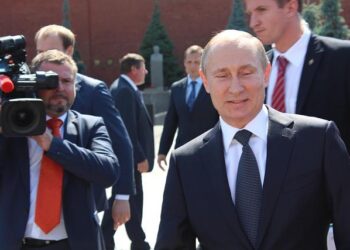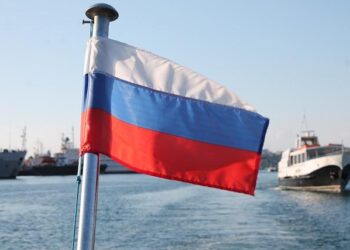NATO Secretary General Jens Stoltenberg has issued a stark warning that Russia could be prepared to launch an attack against the alliance within the next five years. Speaking at a recent security summit, Stoltenberg emphasized the growing threat posed by Moscow’s military buildup and aggressive posturing, underscoring the urgent need for NATO members to bolster their defenses. The statement highlights escalating tensions between Russia and Western powers amid ongoing geopolitical instability across Europe.
Russia’s Growing Military Capabilities Raise Alarm Among NATO Members
Recent assessments by NATO leadership paint a concerning picture of Russia’s military trajectory, suggesting that Moscow is rapidly enhancing its arsenal and strategic capabilities. Advanced missile systems, increased troop deployments near NATO borders, and extensive modernization of nuclear forces are among the key factors fueling apprehension among alliance members. These developments have intensified discussions around readiness and collective defense protocols, as officials weigh the possibility of conflict escalation within a near-term horizon.
Key areas of concern include:
- Expansion of Arctic and Baltic military infrastructure
- Deployment of hypersonic weapons and electronic warfare technologies
- Increase in large-scale military exercises simulating rapid offensive operations
| Capability | Current Status | Projected Growth Next 5 Years |
|---|---|---|
| Hypersonic Missiles | Limited Deployment | Significant Expansion |
| Armored Vehicle Fleet | Modernized | Upgraded with Autonomous Tech |
| Naval Power | Focused on Submarines | Enhanced with Stealth Capabilities |
Strategic Implications of a Potential Russian Offensive on European Security
The prospect of a Russian offensive within the next five years has unveiled a host of strategic challenges that European security architects must urgently address. Key NATO member states are now reassessing defense postures, focusing on rapid mobilization capabilities and enhanced intelligence-sharing frameworks. The evolving geopolitical landscape underscores the necessity for multilateral cooperation that transcends traditional military alliances, incorporating hybrid warfare countermeasures and cyber defense strategies. The Kremlin’s potential offensive not only threatens physical territories but also aims to undermine the political cohesion of the alliance through information warfare and disinformation campaigns.
Critical areas of focus have emerged as priorities, including:
- Reinforcement of Eastern European borders with increased troop deployments and state-of-the-art surveillance technologies.
- Strengthening of cyber resilience to safeguard key infrastructure and communication networks.
- Expansion of rapid response units capable of deterring asymmetrical threats.
- Investment in advanced early warning systems that integrate satellite and ground-based intelligence.
| Strategic Component | Current Status | Required Enhancement |
|---|---|---|
| Border Security | Moderate troop presence | High-intensity rapid deployment |
| Cyber Defense | Fragmented coordination | Unified multinational task forces |
| Intelligence Sharing | Intermittent exchange | Real-time integrated networks |
Urgent Recommendations for Strengthening NATO’s Defense and Deterrence Measures
Immediate enhancement of NATO’s rapid response capabilities is paramount to counter evolving threats from Russia. This includes expanding forward deployment of troops and advanced weaponry in Eastern Europe, coupled with increased funding for joint military exercises that simulate large-scale conflict scenarios. Investing in cutting-edge intelligence, surveillance, and reconnaissance (ISR) technologies will also ensure timely threat detection and effective command and control across member states. Strengthening cyber defense infrastructure must be prioritized, given the growing risk of hybrid warfare that targets critical NATO communication networks and civilian infrastructure.
Coordination among member nations on standardized equipment and interoperability is critical to sustaining a unified defense posture. Enhanced logistical frameworks will facilitate faster troop mobility and resource distribution during crises. Additionally, NATO should enhance diplomatic engagement with partner countries while maintaining a clear deterrent posture. The table below highlights key areas for urgent investment and their projected impact on alliance resilience:
| Priority Area | Focus | Expected Outcome |
|---|---|---|
| Rapid Deployment Forces | Increase troop readiness and mobility | Faster response to regional threats |
| Cyber Security | Strengthen defenses and countermeasures | Secure critical infrastructure |
| ISR Technologies | Expand intelligence-gathering capabilities | Improved situational awareness |
| Joint Exercises | Simulate complex conflict scenarios | Enhanced operational coordination |
Future Outlook
As tensions continue to mount between Russia and NATO, the warning from the alliance’s secretary general underscores the urgency of diplomatic and strategic responses in the coming years. While the possibility of conflict remains uncertain, the statement serves as a stark reminder of the fragile security landscape in Europe and the need for sustained vigilance among member states. Policymakers and analysts alike will be closely monitoring developments as the geopolitical situation evolves.
















